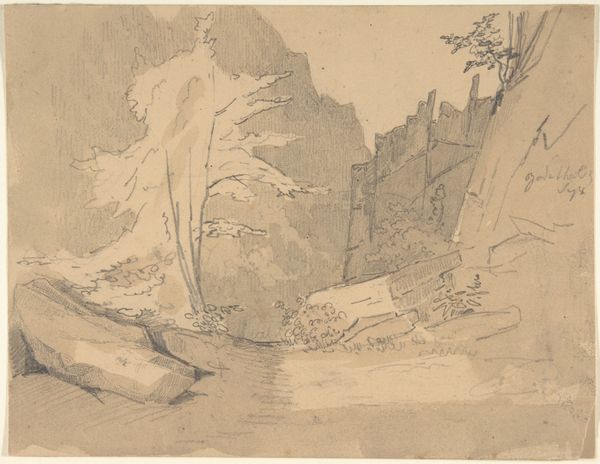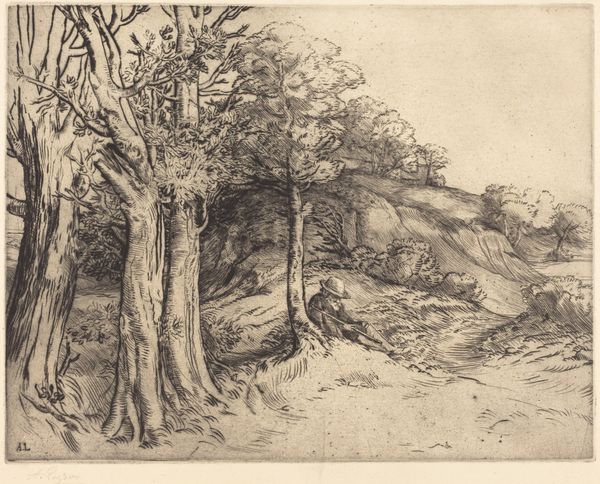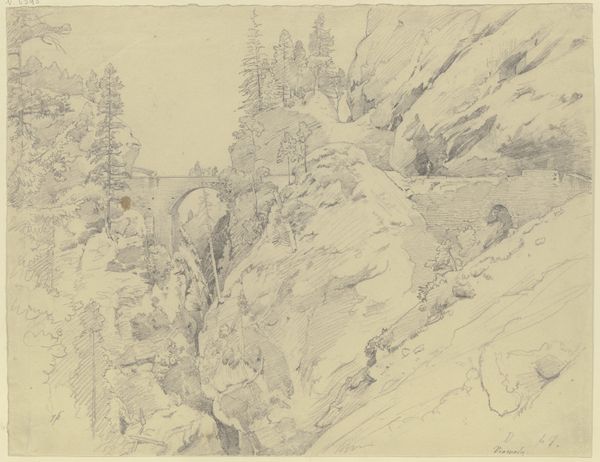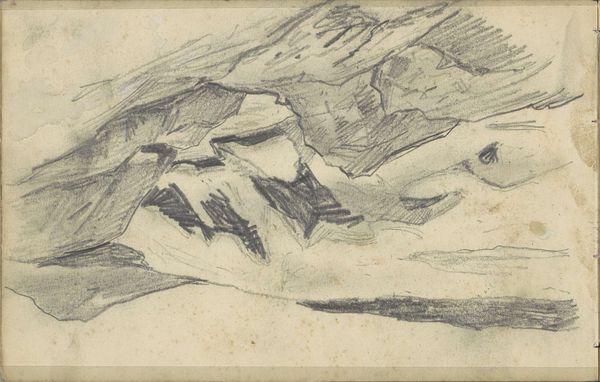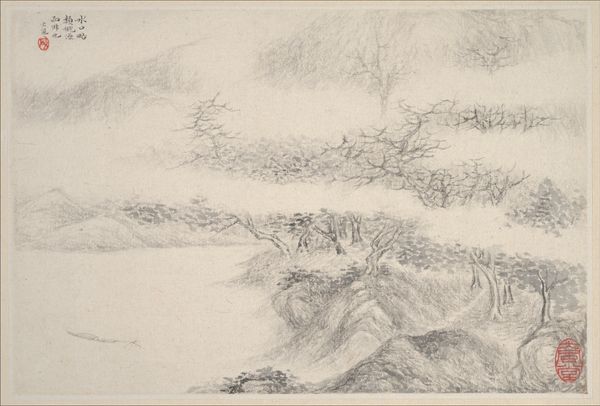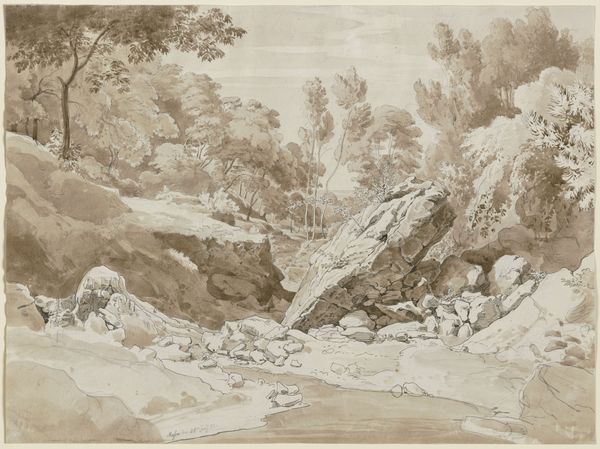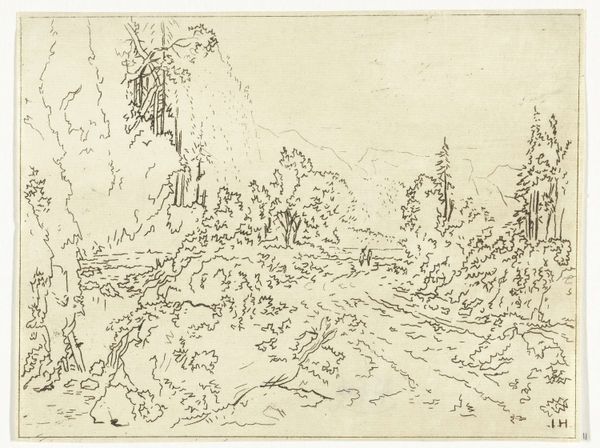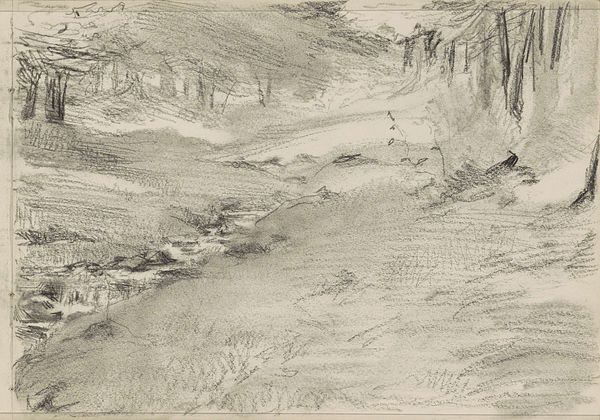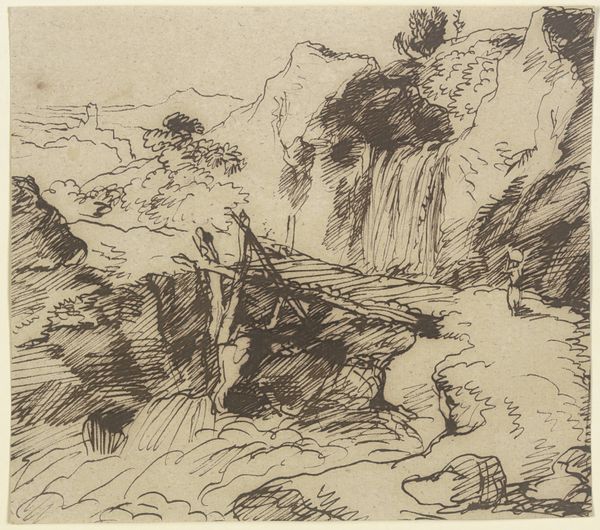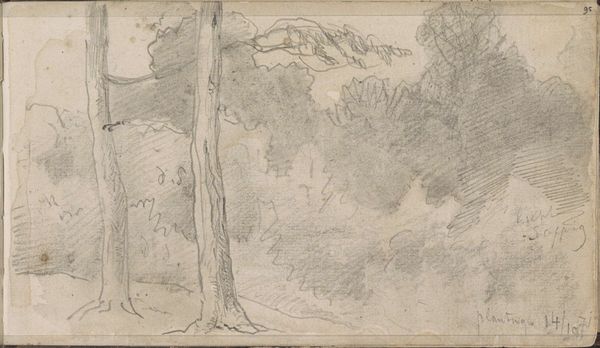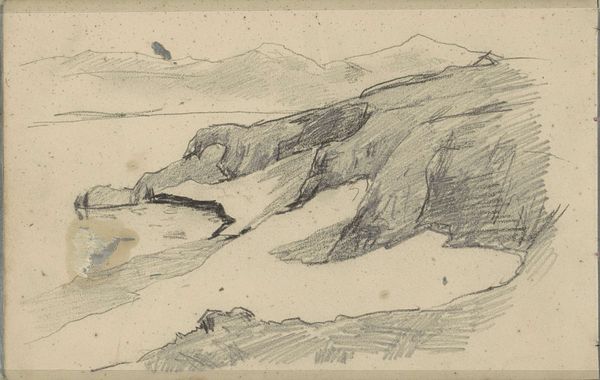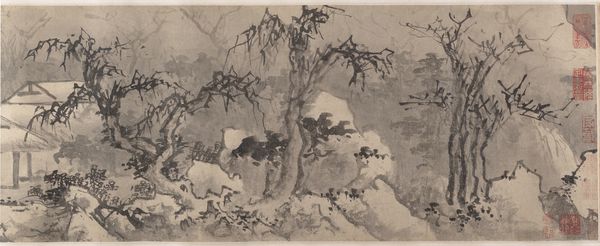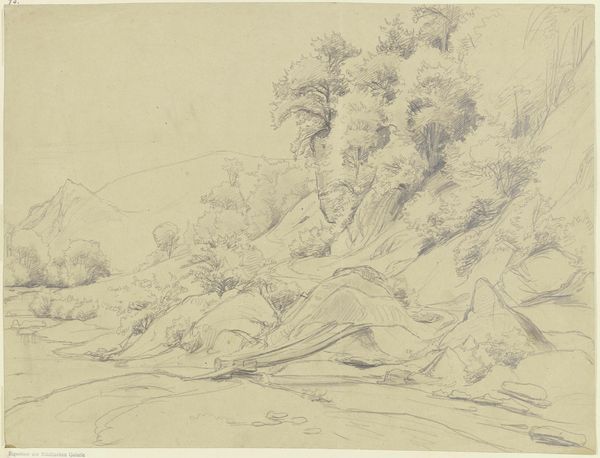
drawing, ink
#
drawing
#
asian-art
#
landscape
#
ink
#
ink drawing experimentation
#
mountain
#
china
Dimensions: 9 1/8 x 69 3/4 in. (23.2 x 177.2 cm)
Copyright: Public Domain
Curator: Before us is “Dream Landscape,” an ink drawing likely created sometime between 1600 and 1750. The piece, currently held here at the Met, is attributed to Cheng Zhengkui, a Chinese artist. Editor: My first impression is that of a world steeped in mist. The peaks seem to emerge and recede, offering a glimpse into a space both real and imagined. Curator: The soft gradations achieved with ink are particularly striking, evoking the dreamlike quality to which the title alludes. Chinese landscape paintings of this period are less about photographic accuracy and more about conveying a mood, a sense of the sublime. Editor: Exactly. It is not about documentation, but about feeling and what a place means. We, the public, bring our experiences into it to produce a layered narrative, a cultural palimpsest as we interact with it. What did it mean for someone from China in the 17th century? What does it mean to a tourist encountering this work in the 21st century? Curator: Mountains, especially in Chinese art, traditionally symbolize the dwelling places of immortals and spiritual cultivation. We can almost picture hermits finding enlightenment amidst these peaks. Note the artist's use of empty space – blank areas represent water or mist and allows the viewer's imagination to fill in the details. This intentional absence is just as meaningful as what's depicted. Editor: I like that term "intentional absence". You know, looking closer, I begin to ponder what’s going on outside the frame: political change, war and empire. What happens to personal art amidst great socio-political challenges and monumental historic transformation? Here, in New York, that seems impossible to avoid contemplating as a kind of parallel reading of the imagery. Curator: Absolutely. Even within the confines of our modern museum experience, we're still able to capture echoes of history. Seeing "Dream Landscape," considering what visions it offered, gives us some sense of the deep cultural streams from which the painting comes. Editor: And how museums contextualize these powerful visions makes all the difference.
Comments
No comments
Be the first to comment and join the conversation on the ultimate creative platform.
